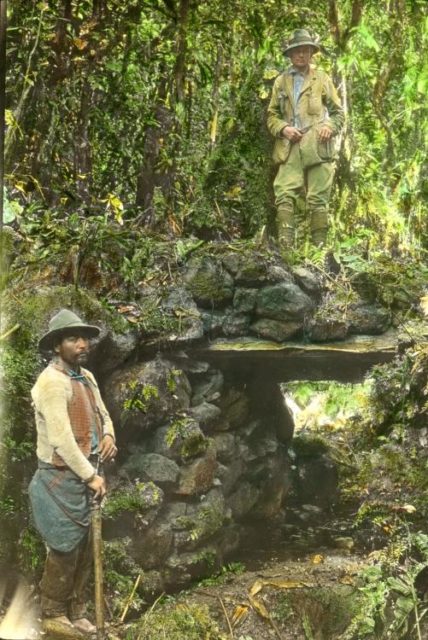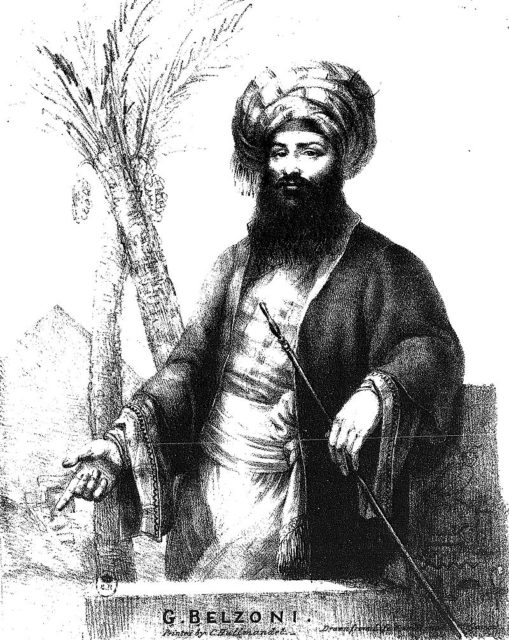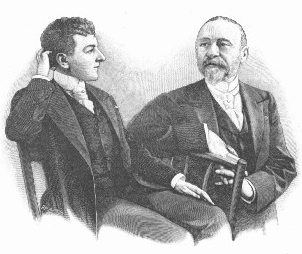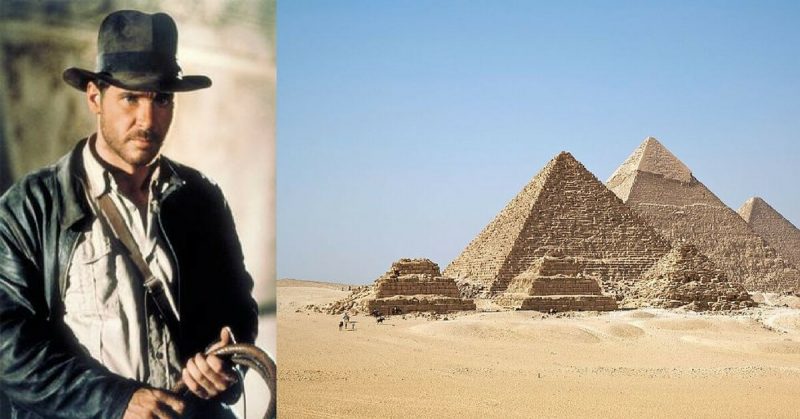Once the Indiana Jones franchise hit the big screen in 1981, everyone wanted to be an archeologist. The adventurous world of Dr. Jones, with his side-kicks and antagonists, led folks to see archaeology in a new light. What was once seen as an occupation that involved endless digging and excavating of dry, dusty bits of pottery and bone suddenly became one full of exotic offbeat glamor and civilization-saving heroics.
But during the periods in which the Indiana Jones films were set, the 1930s and ’40s, with the latest installment taking place in the 1950s, archeology actually did carry this veil of mystique, as distant locations such as the jungles of the Indian sub-continent or the Egyptian desert were considered extremely dangerous and remote.
Even though archeologists usually dislike the over-the-top image portrayed by Harrison Ford in the movies, history proves that there were, in fact, some men and women involved in this profession whose spirit for adventure could be compared to that of Indiana Jones.
1. Percy Fawcett
A geographer, an artillery officer, cartographer, archaeologist and explorer, Percy Fawcett became famous for his adventures in South America. Unfortunately, during his last trip in 1925, Fawcett, together with his eldest son, mysteriously disappeared in the Amazon rainforest. What was he looking for?

The city he had called simply “Z” was, he believed, the lost city of an advanced indigenous civilization. The search for his own Eldorado and his disappearance remain a subject of many debates and controversies, and several expeditions were organized in order to solve the mystery, but with no meaningful result.
Some of his adventures were immortalized by the famous fiction author, Arthur Conan Doyle (who penned the Sherlock Holmes stories), who used Fawcett’s field reports in order to create a credible setting for his Sci-Fi novel, The Lost World.
2. T.E. Lawrence

Lawrence of Arabia was one of the most notable historic figures whose role influenced the Middle East as we know it today. He was a key figure in the organization of an Arab uprising, sponsored by the British Empire, against Turkey during WWI. But his career as a military intelligence officer is another story.
Concerning his interests in archeology, T.E. Lawrence had been fascinated by ancient civilizations ever since he was a boy. During his childhood, Lawrence was intrigued by antiquities and old buildings found around Berkshire, Buckinghamshire, and Oxfordshire, where he grew up.
In 1909, Lawrence, who had not yet gained the sobriquet ‘Of Arabia’, set out alone on a walking tour of the crusader castles in Syria. He walked more than 1000 miles (1600 km) on foot, during which time he became acquainted with the Arab culture, slowly learning their customs and language.
His fascination with the Oriental world continued to grow, and when the war broke out, he had to leave his archeology practice to help the rebellion against the Ottoman Turks for which he became famous.
3. Gertrude Bell

She met Lawrence at the excavation of Carchemish, in Syria, where the two became good friends, as they were both keen on gaining a better understanding of the Arab world. The connection was further deepened by the world war that followed, with Bell also being employed by the British military intelligence.
Both advocated state independence for Iraq under the rule of King Faisal I. Bell was the founder of the Baghdad Archaeological Museum (now the National Museum of Iraq), and was given the title “al-Khatun,” a respected lady of the court by King Faisal.
4. Roy Chapman Andrews
Roy Chapman Andrews, the first American on this list, wasn’t exactly an archeologist, rather a naturalist and a paleontologist, but his adventures could well be the main inspiration behind the Indiana Jones character.
His best-known expeditions include those he made to the Gobi Desert and Mongolia during the 1920s. Here, he fought brigands, bandits, and Raiders, while driving his Dodge car all across the Asian steppes. During the first half of the 20th century, these territories were especially dangerous for foreigners as political turmoil left; countries such as China and Mongolia were decentralized and later full of thrill seekers, adventurers, criminals, revolutionaries and hopeless romantics such as Andrews.

He was well known for his fearless nature and proficient skill in handling firearms and was the first man to discover remnants of a dinosaur egg. His discoveries include many dinosaur bones and the fossil remnants of extinct mammals, and these were key in inspiring further exploration into the existence of extinct species.
5. Hiram Bingham III
The man credited with the discovery of the 15th century Inca citadel Machu Picchu, situated in the Peruvian mountains, Hiram Bingham III, was an American academic, explorer and politician. Even though he wasn’t a trained archeologist, his passion for adventure led him on a search for the long-lost city.
Machu Picchu wasn’t exactly discovered by Bingham but was rather made known to the wider public by him. The American explorer had employed indigenous guides who already knew about the location of the citadel, but their attitude towards it differed from that of Bingham’s who, along with the rest of the western world, took great interest in it for many reasons.

Yale University in 1911 sponsored his first expedition, as he was then a professor of Latin American History and well acquainted with the customs of the local population. Since the expedition was a success, he was granted funds to return and continue his exploration.
In his later life, Bingham went into politics, becoming a Governor of Connecticut and a member of the US Senate.
6. Giovanni Battista Belzoni

A rather interesting addition to this list is the 19th-century circus strongman from Italy, Giovanni Battista Belzoni. Together with his English wife, he performed all over Europe, exhibiting his strength as part of a circus attraction.
Besides his physical traits, Belzoni had a passion for developing hydraulic engines. It was this passion that led him to Egypt as he hoped to strike a sale of his machines to the Egyptian ruler, Muhammad Ali of Egypt. Unfortunately, Ali lost interest in the hydraulic engines, and Belzoni was stranded in the land of the pharaohs.
His wife went to the British consulate in Cairo, where she was employed together with her husband to conduct archeological excavations. Keep in mind that in the 19th century, archeology was more a tomb raiding business than a science.
The accidental archeologist made excavations at the Ramesseum at Thebes, discovered and opened the tomb of Seti I, and became the first modern person to enter the pyramid of Khafre at Giza. Even though he was considered a “pillager,” the British Museum once noted that “he was no worse than his contemporaries.”
7. Jane Dieulafoy
The spirit of adventure ran high in our next and final entry. This brave French woman witnessed the Franco-Prussian war of 1870, and couldn’t let the conventions surrounding her gender stop her in joining her husband in defense of her country.
She disguised herself as a man since it was strictly prohibited for women to join the Army. Not only that, but it was also prohibited for women to wear men’s clothing.

So, Dieulafoy was risking the death penalty if caught. Nevertheless, she served honorably in battle together with her husband, Marcel, and afterward joined him on his assignment in Persia. She continued to use cross-dressing so that she could travel freely as Marcel’s collaborator, as she liked to call herself.
Together with Marcel, she participated in the excavations of the ancient Persian city of Susa, where she discovered the so-called Frieze of Lions, from the time of Darius I. Jane Dieulafoy pioneered archaeological techniques, and helped bring this social science to a higher level of sophistication and acceptance.
